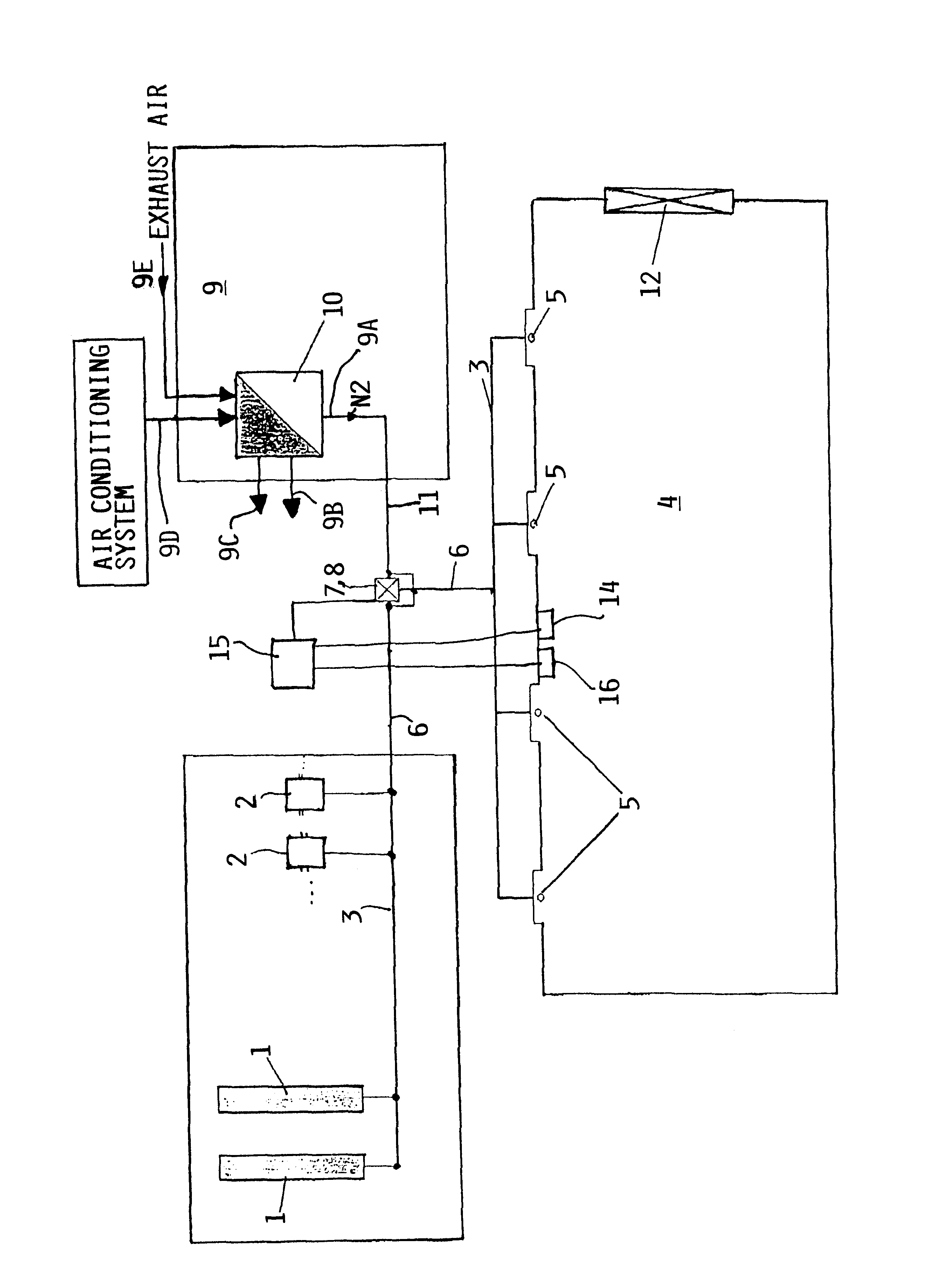Method and system for extinguishing fire in an enclosed space
a fire extinguishing agent and enclosed space technology, applied in boring tools, medical science, dentistry, etc., can solve the problems of aircraft or goods being transported damaged, not suitable for enclosed spaces, and the requirement of fire extinguishing agents adds a substantial weight to the aircra
- Summary
- Abstract
- Description
- Claims
- Application Information
AI Technical Summary
Benefits of technology
Problems solved by technology
Method used
Image
Examples
Embodiment Construction
The illustrated example of a fire extinguishing or suppression system according to the invention includes two compressed nitrogen gas bottles or tanks 1 and two nitrogen gas generators 2, which are all connected by a pipe or duct system 3 to plural extinguishing nozzles 5 arranged within the enclosed space 4 that is to be protected against fire. The nitrogen gas generators 2 may be any known nitrogen generator arrangements, e.g. carrying out a chemical reaction so as to release or generate nitrogen gas as a reaction product. Throughout this specification, the terms "fire extinguishing" and "fire suppression" both refer to the acts of reducing or entirely putting out a fire. In other words, the term "fire extinguishing" does not absolutely require entirely putting out the fire. Also throughout this specification, the term "pipe" and the like refers to any pipe, hose, conduit, duct, channel or the like that can be used to convey nitrogen into the enclosed space. The terms "gas bottle"...
PUM
 Login to View More
Login to View More Abstract
Description
Claims
Application Information
 Login to View More
Login to View More - R&D
- Intellectual Property
- Life Sciences
- Materials
- Tech Scout
- Unparalleled Data Quality
- Higher Quality Content
- 60% Fewer Hallucinations
Browse by: Latest US Patents, China's latest patents, Technical Efficacy Thesaurus, Application Domain, Technology Topic, Popular Technical Reports.
© 2025 PatSnap. All rights reserved.Legal|Privacy policy|Modern Slavery Act Transparency Statement|Sitemap|About US| Contact US: help@patsnap.com


